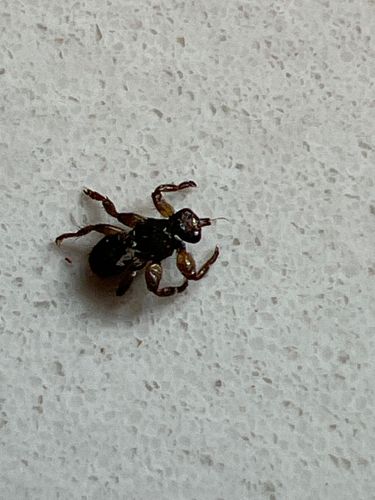Velvet Ant (though it's a type of wasp)
Scientific Name: Various genera and species within the family Mutillidae (e.g., Dasymutilla, Traumatomutilla)
Order & Family: Order: Hymenoptera, Family: Mutillidae
Size: Typically 0.5 to 2.5 cm (0.2 to 1 inch) in length, though some species can be larger.

Natural Habitat
Velvet ants are typically found in sandy areas, grasslands, open woodlands, and desert environments. They are often seen on the ground or in low vegetation.
Diet & Feeding
Adult velvet ants feed on nectar. Larval velvet ants are ectoparasitoids of other insect larvae or pupae, particularly those of ground-nesting bees and wasps.
Behavior Patterns
Velvet ants are generally solitary. Females are wingless and are often seen scurrying across the ground in sunny, sandy areas. Males are winged and can fly. The females are known for their extremely painful sting, often referred to as the 'cow killer' sting, but they are not aggressive and will only sting if provoked or handled. They lay their eggs on or near the larvae or pupae of other insects, typically ground-nesting bees or wasps, and the velvet ant larvae are ectoparasitoids, meaning they feed externally on the host's body.
Risks & Benefits
The primary risk associated with velvet ants is their extremely painful sting from the female. While not typically aggressive, they will sting if handled, and the sting can be medically significant for some individuals due to pain, though it is rarely dangerous. Benefits include their role in regulating populations of other ground-nesting insects, as their larvae parasitize these insects, contributing to ecological balance.
Identified on: 8/13/2025